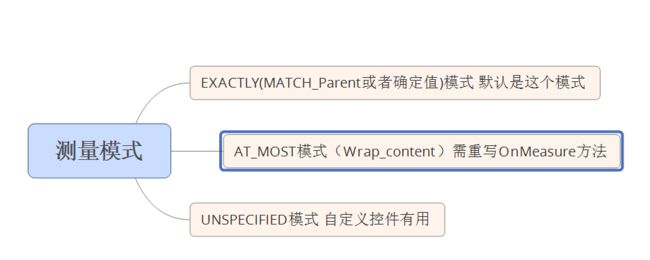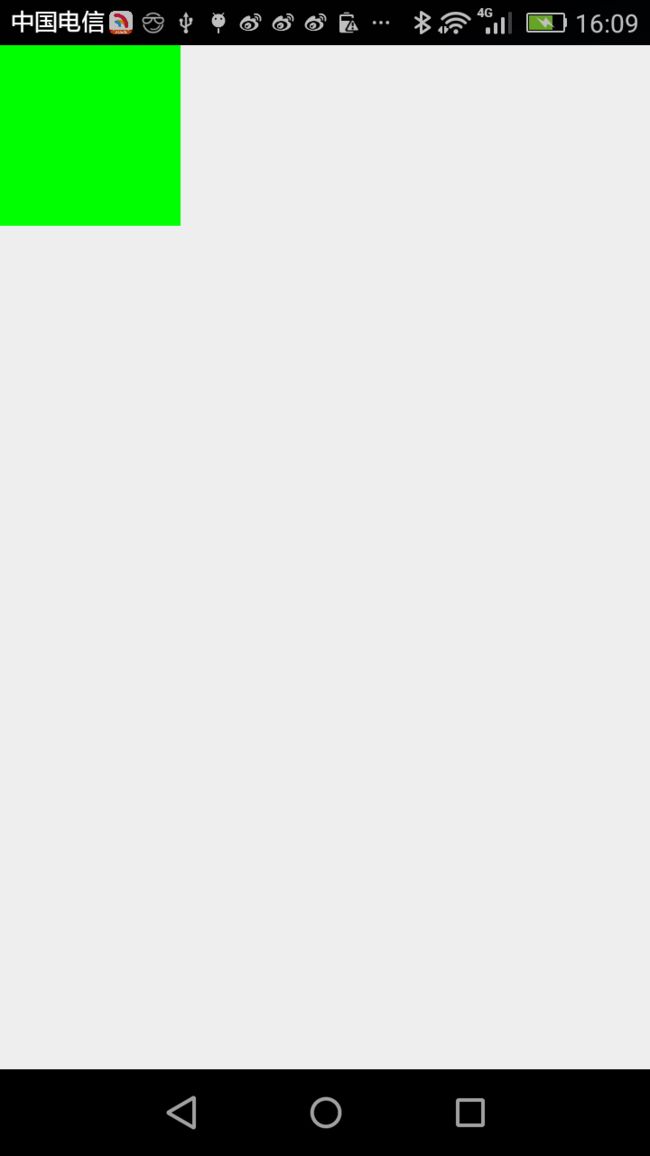- 微信小程序开发---的生命周期函数
J总裁的小芒果
微信小程序小程序
onLaunch:小程序初始化完成时触发,全局只触发一次。适合进行一些初始化操作。onShow:小程序启动或者从后台进入前台时触发。每次小程序进入前台时都会触发。onHide:小程序从前台进入后台时触发,适合做一些暂停操作或存储数据等。onError:小程序发生错误时触发,接受一个错误信息作为参数,用于捕获小程序中的错误。onPageNotFound:小程序页面不存在时触发,通常是用户访问了一个不
- js 时间显示 时间戳转换为时分秒
J总裁的小芒果
javascript开发语言ecmascript
javaimportjava.time.LocalDateTime;importjava.time.format.DateTimeFormatter;DateTimeFormatterformatter=DateTimeFormatter.ofPattern("yyyy-MM-ddHH:mm:ss");Do.getCreateTime().format(formatter);//获取为格式的值//
- vue3 el-form校验 报错formRef.value.validate is not a function
J总裁的小芒果
vue.jselementuijavascript前端vue
这是需要校验的表单【每一行都需要校验】保存在保存按钮中打印formRef.value.validate()是有值的,所以我给它们增加了异步constformData=ref([])construles={name:[{required:true,message:'请输入姓名',trigger:['blur','change']}]}constsaveData=async()=>{constvali
- Python爬虫教程:如何通过接口批量下载视频封面(FFmpeg技术实现)
Python爬虫项目
python爬虫开发语言数据库数据分析scrapyselenium
引言随着在线视频平台的蓬勃发展,视频封面作为视频内容的预览图,一直以来都是观众对视频的第一印象。在爬取视频资源时,很多开发者和研究者往往只关注视频本身,而忽略了视频封面。实际上,视频封面不仅能提供重要的信息(例如视频标题、主题或情感等),而且它们也能作为数据集中的重要属性,用于视频分类、推荐系统等应用。在这篇博客中,我们将深入探讨如何使用Python通过接口批量下载视频封面,利用FFmpeg等技术
- AI 大模型应用数据中心的数据分析架构
AI天才研究院
计算AI大模型企业级应用开发实战DeepSeekR1&大数据AI人工智能大模型javapythonjavascriptkotlingolang架构人工智能大厂程序员硅基计算碳基计算认知计算生物计算深度学习神经网络大数据AIGCAGILLM系统架构设计软件哲学Agent程序员实现财富自由
《AI大模型应用数据中心的数据分析架构》关键词:数据中心、AI大模型、数据分析、架构设计、应用实践摘要:本文深入探讨了AI大模型在数据中心数据分析架构中的应用,从数据中心背景、AI大模型架构与技术、数据处理与分析技术、AI大模型应用与实践等多个方面,全面解析了AI大模型如何助力数据中心实现高效数据分析和智能处理,为读者提供了系统的理论指导和实际案例分析。第一部分:数据中心背景与AI大模型概述第1章
- Qt的QToolButton设置弹出QMenu下拉菜单
水瓶丫头站住
QtQt
在Qt中,使用QToolButton显示下拉菜单可以通过以下步骤实现:基本实现步骤创建QToolButton:实例化一个QToolButton对象。创建QMenu:实例化一个QMenu作为下拉菜单。添加菜单项:通过QMenu::addAction方法添加动作(QAction)。关联菜单到按钮:使用QToolButton::setMenu将菜单绑定到按钮。设置弹出模式:通过setPopupMode调
- 4-001:MySQL 中的索引数量是否越多越好?为什么?
盖盖衍上_染染熊_代码集
00-刷题mysql数据库
MySQL中的索引并不是越多越好,索引数量要合理控制!过多索引的影响增加存储开销每个索引都会占用额外的磁盘空间,索引多了,存储成本增加。降低INSERT、UPDATE、DELETE性能任何涉及数据修改的操作,都需要同时更新索引,影响性能。示例:INSERTINTOusers(id,name)VALUES(1,'Tom');,如果users表有多个索引,则插入时每个索引都需要更新,影响插入速度。可能
- Flutter 常用组件大全
笔沫拾光
flutter
Flutter常用组件大全Flutter提供了丰富的组件来构建UI,以下是常见的组件,按功能类别分类。1️⃣基础布局组件组件作用示例Container盒子容器,支持装饰、边距、大小Container(width:100,height:100,color:Colors.red)Padding内边距Padding(padding:EdgeInsets.all(10),child:Text("Hello
- 审核通过≠报名成功!提醒下报了名的软考考生,这件事别忘了做!
公众号-希赛网
学习方法职场和发展
截止至3月13日18:00,江苏、贵州、山西、大连、安徽、福建、澳门、甘肃、新疆、兵团、四川、浙江、辽宁、吉林、宁波等考区均已开通报名入口。已经报名和准备报名的考生,小希提醒大家,审核通过≠报名成功!一、审核通过≠报名成功虽然软考对考生的学历、专业、工作年限等没有要求,但是部分考区还是会对考生上传的材料、填写的报考信息等进行审核,以确认证件照片满足要求并符合报考属地化管理原则。报名系统并不会以任何
- C# AOT生成的hellowwordEXE运行占用多少内存1-5MB?
专注VB编程开发20年
c#策略模式开发语言
C#使用AOT(Ahead-Of-Time,提前编译)生成的"Hello,World!"可执行文件在运行时占用的内存会受到多种因素的影响,以下是详细分析:影响内存占用的因素操作系统:不同的操作系统(如Windows、Linux、macOS)对进程的内存管理机制不同,会导致内存占用有所差异。运行环境:包括系统中已运行的其他程序、系统的内存管理策略等。编译器和运行时配置:不同版本的.NETSDK以及编
- C# HashTable、HashSet、Dictionary
有诗亦有远方
C#Hash
哈希一、HashTable1.什么是哈希表2.哈希表的Key&Value(1)添加数据(2)“键值对”均是object类型(3)必须有Key键,且Key键不能重复。(4)乱序读取数据3.基本操作二、HashSet1.特点2.HashSet常用扩展方法3.HashSet与Linq操作三、Dictionary四、HashTable和Dictionary的区别一、HashTable哈希表(HashTab
- 简单了解WIndow和Linux的路径含义
alive903
Linuxlinuxwindows
目录1>路径概念2>绝对路径2.1>window绝对路径2.2>Linux绝对路径3>相对路径3.1>window相对路径3.2>Linux相对路径很高兴你能看到这篇文章,同时我的语雀文档也更新了许多嵌入式系列的学习笔记希望能帮到你:https://www.yuque.com/alive-m4b9n1>路径概念路径是用来描述一个文件或目录在文件系统中的位置的方式。路径可以是文件系统中的唯一标识符,
- Typora 0.11.18最后一个免费版
hishere
pythonjavahtmlc++c#
http://pmkiu.woguheihuasheng.cn/3578174开始typora是非常好用的一个md文件编辑器但是最新版是收费的,直到0.11.18版本这已经够用了https://www.aliyundrive.com/s/X6D4LqiUtD5typora的语法typora语法字体Ctrl+1,2,3,4,5,6,对应6个标题,井号与标题直接有空格#标题1##标题2下划线ctrl+
- 嵌入式面试真题——Linux内核空间与用户空间
70000cc
嵌入式面试真题linuxc语言嵌入式硬件面试单片机
本文以32位系统为例介绍内核空间(kernelspace)和用户空间(userspace)。对32位操作系统而言,它的寻址空间(虚拟地址空间,或叫线性地址空间)为4G(2的32次方)。也就是说一个进程的最大地址空间为4G。操作系统的核心是内核(kernel),它独立于普通的应用程序,可以访问受保护的内存空间,也有访问底层硬件设备的所有权限。为了保证内核的安全,现在的操作系统一般都强制用户进程不能直
- MyBatis底层原理深度解析:动态代理与注解如何实现ORM映射
rider189
java开发语言mybatis
一、引言MyBatis作为一款优秀的ORM框架,其核心设计思想是通过动态代理和注解将接口方法与SQL操作解耦。开发者只需定义Mapper接口并添加注解,便能实现数据库操作,这背后隐藏着精妙的动态代理机制与源码设计。本文将从源码层解析MyBatis如何实现这一过程。二、动态代理机制:从接口到实现类关键点:MyBatis通过JDK动态代理为Mapper接口生成代理对象,拦截所有方法调用,将其路由到SQ
- python vuejs聊天室_ws模块指南+Vue在线聊天室
无1234
pythonvuejs聊天室
简介ws模块是Node端的一个WebSocket协议的实现,该协议允许客户端(一般是浏览器)持久化和服务端的连接.这种可以持续连接的特性使得WebScoket特别适合用于适合用于游戏或者聊天室等使用场景.ws模块相较于其他基于WebSocket协议的模块来说非常的纯粹.他只关注基于WebSocket协议的实现,其他例如Socket.io提供了回退手段,当WebSocket无法使用的时候会利用轮询来
- 树莓科技集团董事长:第五代产业园运营模式的深度剖析与展望
树莓集团
科技人工智能百度物联网大数据
第五代产业园运营模式,以创新为核心驱动,强调数字化、网络化和资源整合。树莓科技集团在这一领域具有代表性,其运营模式值得深入剖析。核心特征数字化转型:第五代产业园高度重视数字化技术的应用,通过构建数字化平台,实现园区内企业、资源、信息的互联互通。并网化运营:树莓集团在全国28个省市布局产业园,形成网络化运营,促进资源共享和协同发展。全产业链整合:充分发挥全产业链资源整合优势,为入园企业提供全方位服务
- 入门到入土,Java学习 day17(Lambda表达式,集合进阶)
慕容魏
java学习python
publicstaticStringtoString(数组)把数组拼接成一个字符串publicstaticintbinarySearch(数组,查找的元素)二分查找法找元素publicstaticint[]copyOf(原数组,新数组长度)拷贝数组长度小就拷贝几个,长度一样完全拷贝,长度大后面补默认值publicstaticint[]copyOfRange(原数组,起始索引,结束索引)拷贝数组(指
- Python的struct模块
smilelance
Pythonpythonstructalignmentstringbufferexception
struct模块提供将二进制数据转换为结构化数据或相反的功能,它定义了以下函数和异常:exceptionstruct.errorstruct.pack(fmt,v1,v2,…)返回一个string,string由v1,v2…经过给出的格式fmt组成,参数的个数有和类型要和给出的格式一一对应struct.pack_into(fmt,buffer,offset,v1,v2,…)按照格式fmt将v1,v
- 【每日一题】93. 复原 IP 地址
聆听逝去的流
每日一题leetcode算法每日一题回溯
文章目录题目解题思路代码(C++)回溯总结题目题目链接:93.复原IP地址有效IP地址正好由四个整数(每个整数位于0到255之间组成,且不能含有前导0),整数之间用'.'分隔。例如:"0.1.2.201"和"192.168.1.1"是有效IP地址,但是"0.011.255.245"、"192.168.1.312"和"
[email protected]"是无效IP地址。给定一个只包含数字的字符串s,用以表示一个
- LeetCode-100题(Hot) 93. 复原 IP 地址 [Java实现]
IllTamer
LeetCodeleetcodejava
给定一个只包含数字的字符串,用以表示一个IP地址,返回所有可能从s获得的有效IP地址。你可以按任何顺序返回答案。有效IP地址正好由四个整数(每个整数位于0到255之间组成,且不能含有前导0),整数之间用'.'分隔。例如:"0.1.2.201"和"192.168.1.1"是有效IP地址,但是"0.011.255.245"、"192.168.1.312"和"
[email protected]"是无效IP地址。示例
- leetcode93. 复原IP地址
Rookie2Master
leetcode字符串剪枝回溯leetcode
传送门题目:给定一个只包含数字的字符串,复原它并返回所有可能的IP地址格式。有效的IP地址正好由四个整数(每个整数位于0到255之间组成),整数之间用‘.’分隔。输入:“25525511135”输出:[“255.255.11.135”,“255.255.111.35”]分析剪枝条件:1、一开始,字符串的长度小于4或者大于12,一定不能拼凑出合法的ip地址(这一点可以一般化到中间结点的判断中,以产生
- LeetCode详解C++版
纵深
算法算法数据结构c++
打算把LeetCode上面的题都实现一遍,每日两题LeetCode目录1.两数之和2.两数相加11.盛最多水的容器15.三数之和33.搜索旋转排序数组34.在排序数组中查找元素的第一个和最后一个位置35.搜索插入位置53.最大子数组和64.最小路径和70.爬楼梯74.搜索二维矩阵82.删除排序链表中的重复元素II88.合并两个有序数组153.寻找旋转排序数组中的最小值162.寻找峰值167.两数之
- 设计模式学习手册(四)(原型模式)
勇敢一点♂
设计模式学习原型模式
写在前面书接上文设计模式学习手册(三)(建造者模式)原型模式简单来说就是复制一个已存在的原型实例,并对其进行必要的修改,来创建新的对象。原型模式通常会有一个clone()方法用于复制对象。优点:直接复制现有对象,避免了重复的初始化过程,减少开销。可以动态地改变克隆对象的属性,适应不同的需求。无需关心对象的构造细节,通过复制现有实例即可创建新对象。缺点:会涉及到编程中的一个经典问题:深浅拷贝Clon
- python的一些基础知识学习
勇敢一点♂
python学习
列表(list)和元组(tuple)列表和元组,都是一个可以放置任意数据类型的有序集合,比如里面可以同时包含int和string类型都是有序的列表是动态的,长度大小不固定,可以随意地增加、删减或者改变元素。元组是静态的,长度大小固定,无法增加删减或者改变常规操作关于赋值,list可以很轻松的根据索引赋值,但是tuple不可以listA=[1,2,3,4]listA[3]=10print(listA
- MessageBox()
程工助力英语中国话
win32MessageBox
书籍:《windows程序设计(第五版)》的开始->编写第一个WINDOWS程序环境:visualstudio2022内容:编写第一个WINDOWS程序一、函数原型与参数解析intWINAPIMessageBox(HWNDhWnd,//窗口句柄LPCTSTRlpText,//消息内容LPCTSTRlpCaption,//标题UINTuType//类型参数);**hWnd**:指定消息框的父窗口句柄
- 《Web 应用项目开发》课程心得体会:从理论到实战,开启 Web 开发新征程
m0_74824091
前端
在信息技术飞速发展的当下,Web应用已然渗透到生活的方方面面,从日常网购、社交娱乐,到在线办公、学习平台,无一不是Web应用的成果。怀着对互联网技术的热忱与憧憬,我踏入了《Web应用项目开发》这门课程,历经数月的沉浸式学习与实践,收获远超预期,犹如经历一场脱胎换骨的蜕变,以下便是我在这门课程中的全面心得体会。夯实基础:Web技术初相识课程伊始,仿若踏入一片未知的技术丛林,HTML、CSS和Java
- PyTorch 深度学习实战(13):Proximal Policy Optimization (PPO) 算法
进取星辰
PyTorch深度学习实战深度学习pytorch算法
在上一篇文章中,我们介绍了Actor-Critic算法,并使用它解决了CartPole问题。本文将深入探讨ProximalPolicyOptimization(PPO)算法,这是一种更稳定、更高效的策略优化方法。我们将使用PyTorch实现PPO算法,并应用于经典的CartPole问题。一、PPO算法基础PPO是OpenAI提出的一种强化学习算法,旨在解决策略梯度方法中的训练不稳定问题。PPO通过
- 3月14日复盘
四万二千
python人工智能
挑战AI全栈第四天!(终于双休了)容器python中默认有4种容器列表list字典dict集合set元组tuple一、Python列表(list)Python支持多种复合数据类型,可将不同值组合在一起。最常用的列表,是用方括号标注,逗号分隔的一组值。列表可以包含不同类型的元素,但一般情况下,各个元素的类型相同列表是一种可以存储任意个各种类型的序列容器列表内的数据有先后顺序关系列表是可变的容器1.列
- 【十五】Golang 结构体
张胤尘
Golanggolang开发语言后端
欢迎来到张胤尘的开源技术站开源如江河,汇聚众志成。代码似星辰,照亮行征程。开源精神长,传承永不忘。携手共前行,未来更辉煌文章目录结构体定义初始化使用字段名初始化按字段顺序初始化使用`new`函数初始化结构体零值访问结构体可访问性访问方式结构体方法方法的调用可访问性访问方式方法接收者值接收者指针接收者其他场景结构体的比较匿名结构体结构体嵌套嵌套结构体中的方法匿名字段序列化与反序列化常见的序列化格式字
- 怎么样才能成为专业的程序员?
cocos2d-x小菜
编程PHP
如何要想成为一名专业的程序员?仅仅会写代码是不够的。从团队合作去解决问题到版本控制,你还得具备其他关键技能的工具包。当我们询问相关的专业开发人员,那些必备的关键技能都是什么的时候,下面是我们了解到的情况。
关于如何学习代码,各种声音很多,然后很多人就被误导为成为专业开发人员懂得一门编程语言就够了?!呵呵,就像其他工作一样,光会一个技能那是远远不够的。如果你想要成为
- java web开发 高并发处理
BreakingBad
javaWeb并发开发处理高
java处理高并发高负载类网站中数据库的设计方法(java教程,java处理大量数据,java高负载数据) 一:高并发高负载类网站关注点之数据库 没错,首先是数据库,这是大多数应用所面临的首个SPOF。尤其是Web2.0的应用,数据库的响应是首先要解决的。 一般来说MySQL是最常用的,可能最初是一个mysql主机,当数据增加到100万以上,那么,MySQL的效能急剧下降。常用的优化措施是M-S(
- mysql批量更新
ekian
mysql
mysql更新优化:
一版的更新的话都是采用update set的方式,但是如果需要批量更新的话,只能for循环的执行更新。或者采用executeBatch的方式,执行更新。无论哪种方式,性能都不见得多好。
三千多条的更新,需要3分多钟。
查询了批量更新的优化,有说replace into的方式,即:
replace into tableName(id,status) values
- 微软BI(3)
18289753290
微软BI SSIS
1)
Q:该列违反了完整性约束错误;已获得 OLE DB 记录。源:“Microsoft SQL Server Native Client 11.0” Hresult: 0x80004005 说明:“不能将值 NULL 插入列 'FZCHID',表 'JRB_EnterpriseCredit.dbo.QYFZCH';列不允许有 Null 值。INSERT 失败。”。
A:一般这类问题的存在是
- Java中的List
g21121
java
List是一个有序的 collection(也称为序列)。此接口的用户可以对列表中每个元素的插入位置进行精确地控制。用户可以根据元素的整数索引(在列表中的位置)访问元素,并搜索列表中的元素。
与 set 不同,列表通常允许重复
- 读书笔记
永夜-极光
读书笔记
1. K是一家加工厂,需要采购原材料,有A,B,C,D 4家供应商,其中A给出的价格最低,性价比最高,那么假如你是这家企业的采购经理,你会如何决策?
传统决策: A:100%订单 B,C,D:0%
&nbs
- centos 安装 Codeblocks
随便小屋
codeblocks
1.安装gcc,需要c和c++两部分,默认安装下,CentOS不安装编译器的,在终端输入以下命令即可yum install gccyum install gcc-c++
2.安装gtk2-devel,因为默认已经安装了正式产品需要的支持库,但是没有安装开发所需要的文档.yum install gtk2*
3. 安装wxGTK
yum search w
- 23种设计模式的形象比喻
aijuans
设计模式
1、ABSTRACT FACTORY—追MM少不了请吃饭了,麦当劳的鸡翅和肯德基的鸡翅都是MM爱吃的东西,虽然口味有所不同,但不管你带MM去麦当劳或肯德基,只管向服务员说“来四个鸡翅”就行了。麦当劳和肯德基就是生产鸡翅的Factory 工厂模式:客户类和工厂类分开。消费者任何时候需要某种产品,只需向工厂请求即可。消费者无须修改就可以接纳新产品。缺点是当产品修改时,工厂类也要做相应的修改。如:
- 开发管理 CheckLists
aoyouzi
开发管理 CheckLists
开发管理 CheckLists(23) -使项目组度过完整的生命周期
开发管理 CheckLists(22) -组织项目资源
开发管理 CheckLists(21) -控制项目的范围开发管理 CheckLists(20) -项目利益相关者责任开发管理 CheckLists(19) -选择合适的团队成员开发管理 CheckLists(18) -敏捷开发 Scrum Master 工作开发管理 C
- js实现切换
百合不是茶
JavaScript栏目切换
js主要功能之一就是实现页面的特效,窗体的切换可以减少页面的大小,被门户网站大量应用思路:
1,先将要显示的设置为display:bisible 否则设为none
2,设置栏目的id ,js获取栏目的id,如果id为Null就设置为显示
3,判断js获取的id名字;再设置是否显示
代码实现:
html代码:
<di
- 周鸿祎在360新员工入职培训上的讲话
bijian1013
感悟项目管理人生职场
这篇文章也是最近偶尔看到的,考虑到原博客发布者可能将其删除等原因,也更方便个人查找,特将原文拷贝再发布的。“学东西是为自己的,不要整天以混的姿态来跟公司博弈,就算是混,我觉得你要是能在混的时间里,收获一些别的有利于人生发展的东西,也是不错的,看你怎么把握了”,看了之后,对这句话记忆犹新。 &
- 前端Web开发的页面效果
Bill_chen
htmlWebMicrosoft
1.IE6下png图片的透明显示:
<img src="图片地址" border="0" style="Filter.Alpha(Opacity)=数值(100),style=数值(3)"/>
或在<head></head>间加一段JS代码让透明png图片正常显示。
2.<li>标
- 【JVM五】老年代垃圾回收:并发标记清理GC(CMS GC)
bit1129
垃圾回收
CMS概述
并发标记清理垃圾回收(Concurrent Mark and Sweep GC)算法的主要目标是在GC过程中,减少暂停用户线程的次数以及在不得不暂停用户线程的请夸功能,尽可能短的暂停用户线程的时间。这对于交互式应用,比如web应用来说,是非常重要的。
CMS垃圾回收针对新生代和老年代采用不同的策略。相比同吞吐量垃圾回收,它要复杂的多。吞吐量垃圾回收在执
- Struts2技术总结
白糖_
struts2
必备jar文件
早在struts2.0.*的时候,struts2的必备jar包需要如下几个:
commons-logging-*.jar Apache旗下commons项目的log日志包
freemarker-*.jar
- Jquery easyui layout应用注意事项
bozch
jquery浏览器easyuilayout
在jquery easyui中提供了easyui-layout布局,他的布局比较局限,类似java中GUI的border布局。下面对其使用注意事项作简要介绍:
如果在现有的工程中前台界面均应用了jquery easyui,那么在布局的时候最好应用jquery eaysui的layout布局,否则在表单页面(编辑、查看、添加等等)在不同的浏览器会出
- java-拷贝特殊链表:有一个特殊的链表,其中每个节点不但有指向下一个节点的指针pNext,还有一个指向链表中任意节点的指针pRand,如何拷贝这个特殊链表?
bylijinnan
java
public class CopySpecialLinkedList {
/**
* 题目:有一个特殊的链表,其中每个节点不但有指向下一个节点的指针pNext,还有一个指向链表中任意节点的指针pRand,如何拷贝这个特殊链表?
拷贝pNext指针非常容易,所以题目的难点是如何拷贝pRand指针。
假设原来链表为A1 -> A2 ->... -> An,新拷贝
- color
Chen.H
JavaScripthtmlcss
<!DOCTYPE HTML PUBLIC "-//W3C//DTD HTML 4.01 Transitional//EN" "http://www.w3.org/TR/html4/loose.dtd"> <HTML> <HEAD>&nbs
- [信息与战争]移动通讯与网络
comsci
网络
两个坚持:手机的电池必须可以取下来
光纤不能够入户,只能够到楼宇
建议大家找这本书看看:<&
- oracle flashback query(闪回查询)
daizj
oracleflashback queryflashback table
在Oracle 10g中,Flash back家族分为以下成员:
Flashback Database
Flashback Drop
Flashback Table
Flashback Query(分Flashback Query,Flashback Version Query,Flashback Transaction Query)
下面介绍一下Flashback Drop 和Flas
- zeus持久层DAO单元测试
deng520159
单元测试
zeus代码测试正紧张进行中,但由于工作比较忙,但速度比较慢.现在已经完成读写分离单元测试了,现在把几种情况单元测试的例子发出来,希望有人能进出意见,让它走下去.
本文是zeus的dao单元测试:
1.单元测试直接上代码
package com.dengliang.zeus.webdemo.test;
import org.junit.Test;
import o
- C语言学习三printf函数和scanf函数学习
dcj3sjt126com
cprintfscanflanguage
printf函数
/*
2013年3月10日20:42:32
地点:北京潘家园
功能:
目的:
测试%x %X %#x %#X的用法
*/
# include <stdio.h>
int main(void)
{
printf("哈哈!\n"); // \n表示换行
int i = 10;
printf
- 那你为什么小时候不好好读书?
dcj3sjt126com
life
dady, 我今天捡到了十块钱, 不过我还给那个人了
good girl! 那个人有没有和你讲thank you啊
没有啦....他拉我的耳朵我才把钱还给他的, 他哪里会和我讲thank you
爸爸, 如果地上有一张5块一张10块你拿哪一张呢....
当然是拿十块的咯...
爸爸你很笨的, 你不会两张都拿
爸爸为什么上个月那个人来跟你讨钱, 你告诉他没
- iptables开放端口
Fanyucai
linuxiptables端口
1,找到配置文件
vi /etc/sysconfig/iptables
2,添加端口开放,增加一行,开放18081端口
-A INPUT -m state --state NEW -m tcp -p tcp --dport 18081 -j ACCEPT
3,保存
ESC
:wq!
4,重启服务
service iptables
- Ehcache(05)——缓存的查询
234390216
排序ehcache统计query
缓存的查询
目录
1. 使Cache可查询
1.1 基于Xml配置
1.2 基于代码的配置
2 指定可搜索的属性
2.1 可查询属性类型
2.2 &
- 通过hashset找到数组中重复的元素
jackyrong
hashset
如何在hashset中快速找到重复的元素呢?方法很多,下面是其中一个办法:
int[] array = {1,1,2,3,4,5,6,7,8,8};
Set<Integer> set = new HashSet<Integer>();
for(int i = 0
- 使用ajax和window.history.pushState无刷新改变页面内容和地址栏URL
lanrikey
history
后退时关闭当前页面
<script type="text/javascript">
jQuery(document).ready(function ($) {
if (window.history && window.history.pushState) {
- 应用程序的通信成本
netkiller.github.com
虚拟机应用服务器陈景峰netkillerneo
应用程序的通信成本
什么是通信
一个程序中两个以上功能相互传递信号或数据叫做通信。
什么是成本
这是是指时间成本与空间成本。 时间就是传递数据所花费的时间。空间是指传递过程耗费容量大小。
都有哪些通信方式
全局变量
线程间通信
共享内存
共享文件
管道
Socket
硬件(串口,USB) 等等
全局变量
全局变量是成本最低通信方法,通过设置
- 一维数组与二维数组的声明与定义
恋洁e生
二维数组一维数组定义声明初始化
/** * */ package test20111005; /** * @author FlyingFire * @date:2011-11-18 上午04:33:36 * @author :代码整理 * @introduce :一维数组与二维数组的初始化 *summary: */ public c
- Spring Mybatis独立事务配置
toknowme
mybatis
在项目中有很多地方会使用到独立事务,下面以获取主键为例
(1)修改配置文件spring-mybatis.xml <!-- 开启事务支持 --> <tx:annotation-driven transaction-manager="transactionManager" /> &n
- 更新Anadroid SDK Tooks之后,Eclipse提示No update were found
xp9802
eclipse
使用Android SDK Manager 更新了Anadroid SDK Tooks 之后,
打开eclipse提示 This Android SDK requires Android Developer Toolkit version 23.0.0 or above, 点击Check for Updates
检测一会后提示 No update were found

